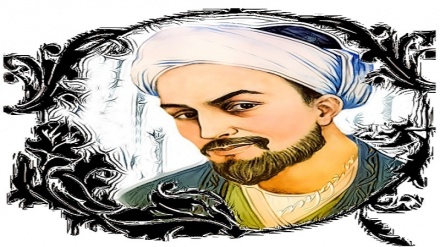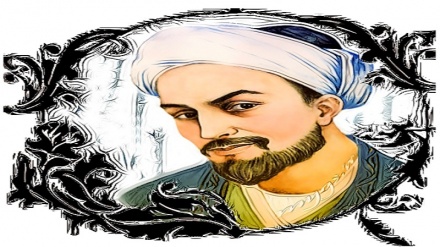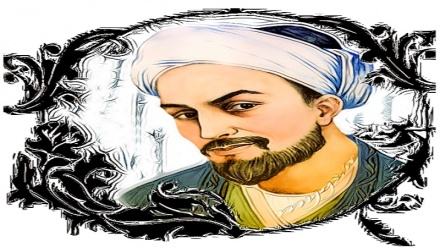Iranian notables, sources of global honor (197)
As a reminder, it was said that Fakhruddin Eraqi was a prominent Muslim mystic and poet of Farsi language in the 7th century AH (13th century AD) who was born in Komjan village of Hamedan Province.
It was also said that he learnt the Qur’an by heart in 9 months at the age of 5. At the age of 17, Eraqi was a master of all sciences of the day and started teaching in the city of Hamedan. Very soon he left Hamedan for Multan in the Subcontinent to join the pupils of the renowned mystic of the time, Sheikh Baha’uddin Zakaria. Then, he reached a degree in mysticism that Sheikh Zakaria gave his own cloak to Eraqi and he became one of the prominent students of the Sheikh. Later on, he traveled to Mecca, and left there for Konia in today’s Turkey to attend the class of Sheikh Sadruddin Qunavi. Thus, he stayed in Konia till 675 AH when he went to Egypt and then Syria to stay in Damascus till the end of his life. It is said that Eraqi succumbed to a painful and fatal disease when he was 78 or 82 years old. He was buried at Jabal al-Salihiya behind the tomb of Muhyiddin ibn Arabi. Fakhruddin Eraqi has authored several books. We have already discussed his work Loma’at and today we will continue the discussion.
The style of the book Loma’at is complicated, but since the theme of the book is love, it is attracts the reader. Sometimes, the book employs Arabic words and expressions to convey the meaning. Yet, a general review of the book shows that the author does not intend to make the work adorned with literary images and motifs and verbal complications. He prefers to convey the sense rather than to add to the beauty of the work.
Combination of poetry and prose is one of the conspicuous features of Loma’at. The Arabic and Farsi poems have been inserted in the text for emphasis or corroboration of a certain issue. The Arabic poems are mostly chosen from Ibn Farez, Ibn Arabi and other Arab poets like al-Mutanabbi; while the Farsi poems are mostly adopted from Attar or the author himself. Mentioning the lines of Ib Farez and others in fact helps Eraqi to convey the connotation of his thought. Sometimes, he mentions a single line of his own poems and, at other times, he adds a lyric or other type of poem to make the text more beautiful and more profound.
Another feature of Loma’at is the usage of short and concise phrases which is typical in the Khorasani style of poetry. Eraqi continues Loma’at in the same style, unlike other contemporary books like Kelileh va Demneh and Marzban Nameh, which employ complicated and lengthy phrases and sentences.
One of the aspects of Loma’at is the status of thought in the book. Loma’at is a wonderful book in this aspect. Since Eraqi has written the book in Konia, he has benefited from the great mystic poets of the age such as Mowlana Jalaluddin and Shams Tabrizi. As a matter of fact, he has made use of the mystic thought in a good way. On one hand, he was affected by Ibn Arabi; while on the other hand, he couldn’t be indifferent before the lofty thoughts of the paragon and pride of Farsi poetry and Islamic mysticism Mowlana.
It is said that Mowlana paid special attention to Fakhruddin Eraqi among the students and companions of Sheikh Sadruddin. The attention that was paid by Mu’inuddin Parvaneh to Eraqi was indeed the love of Mowlana to this mystic poet; although Parvaneh was doing this upon the recommendation of Sadruddin Qunavi. However, Eraqi knew the value of this attention and properly benefited from the opportunity. In the book Manaqeb al-Arefin Aflaki we read on this bilateral attention, “Loma’at has written his book Loma’at in this land in which love is everywhere. He has inserted the most profound thoughts in a simple, smooth and totally succinct way. You can find highly disputed issues like love, unity of existence, relationship of beloved and lover, theology, self-cognizance and the call to God in the book. Therefore, one can say that the prose of Loma’at is a lofty prose with the features of the prose of the 7th century AH. It can be compared to the Golestan of Sa’adi and indicated the high capacity of Farsi language to convey lofty mystic thoughts and notions.
RM/ME


